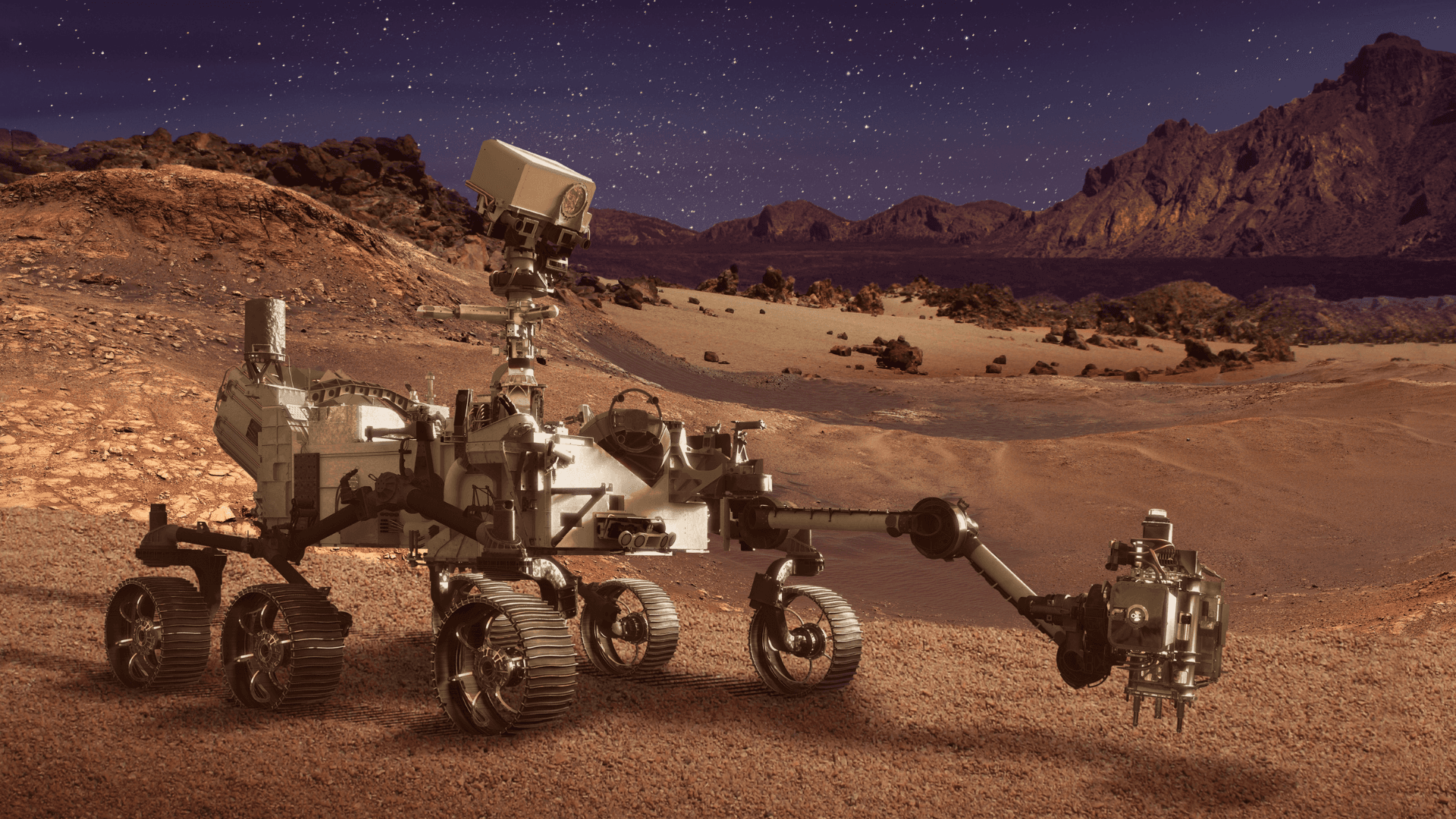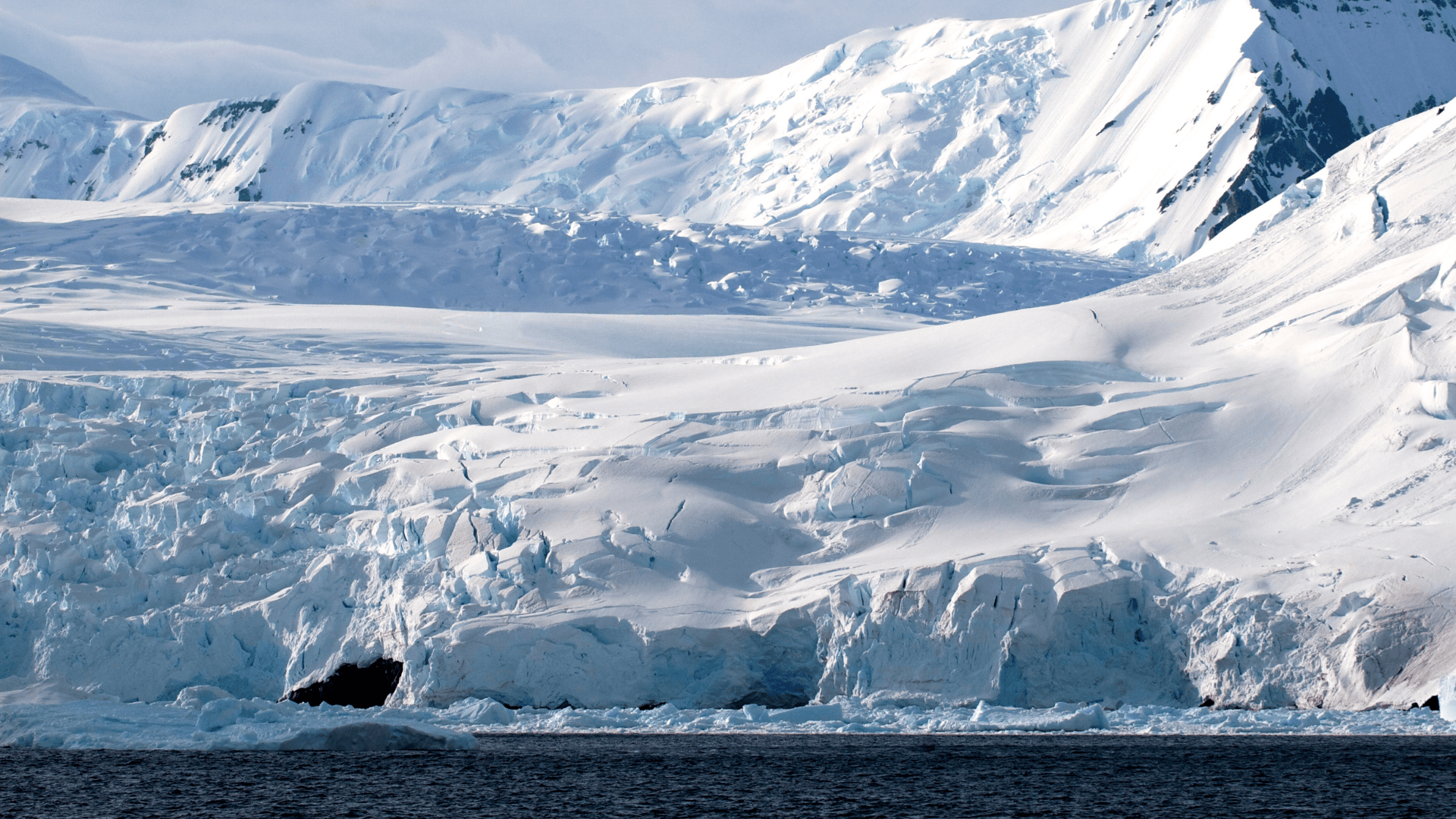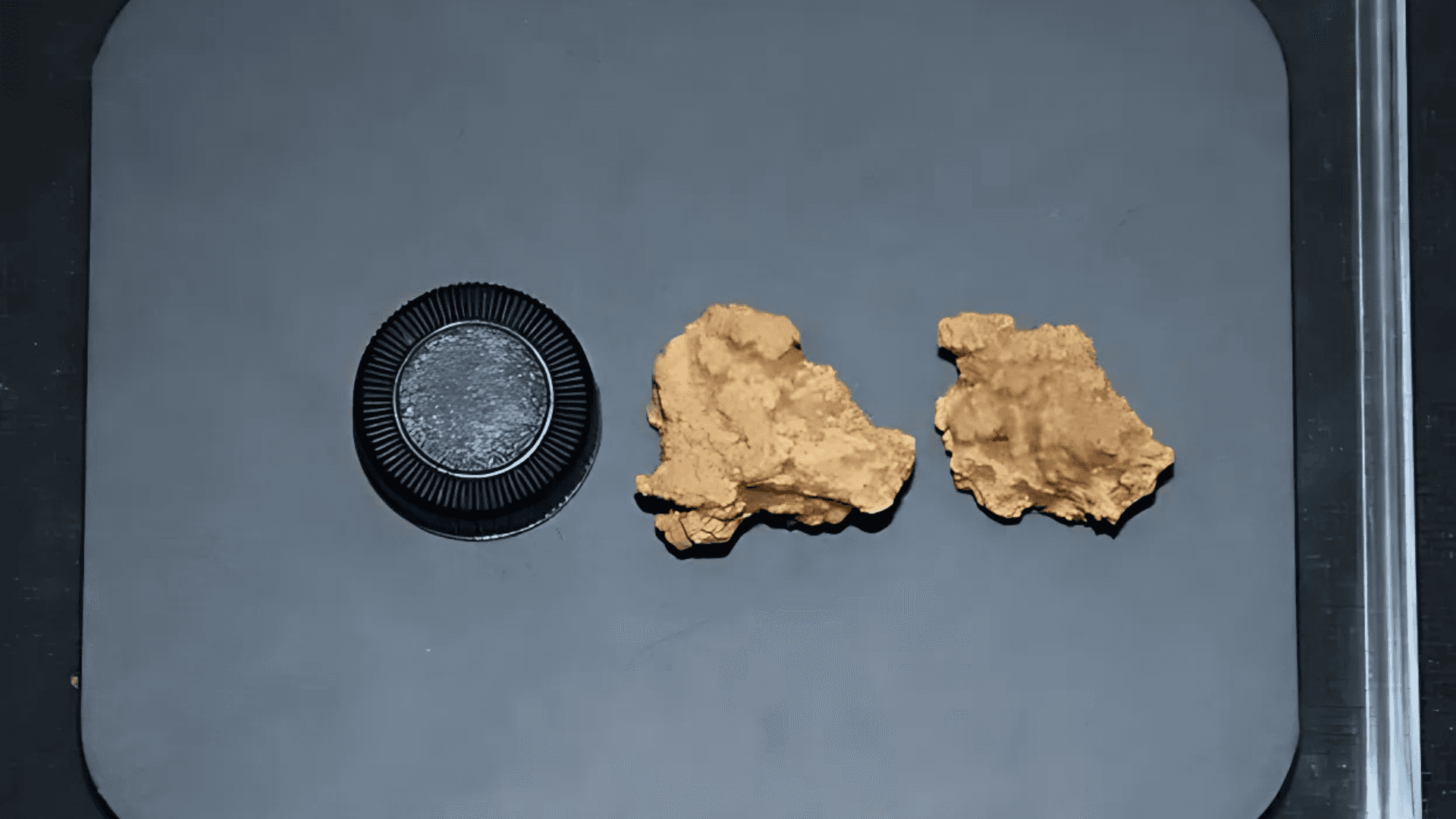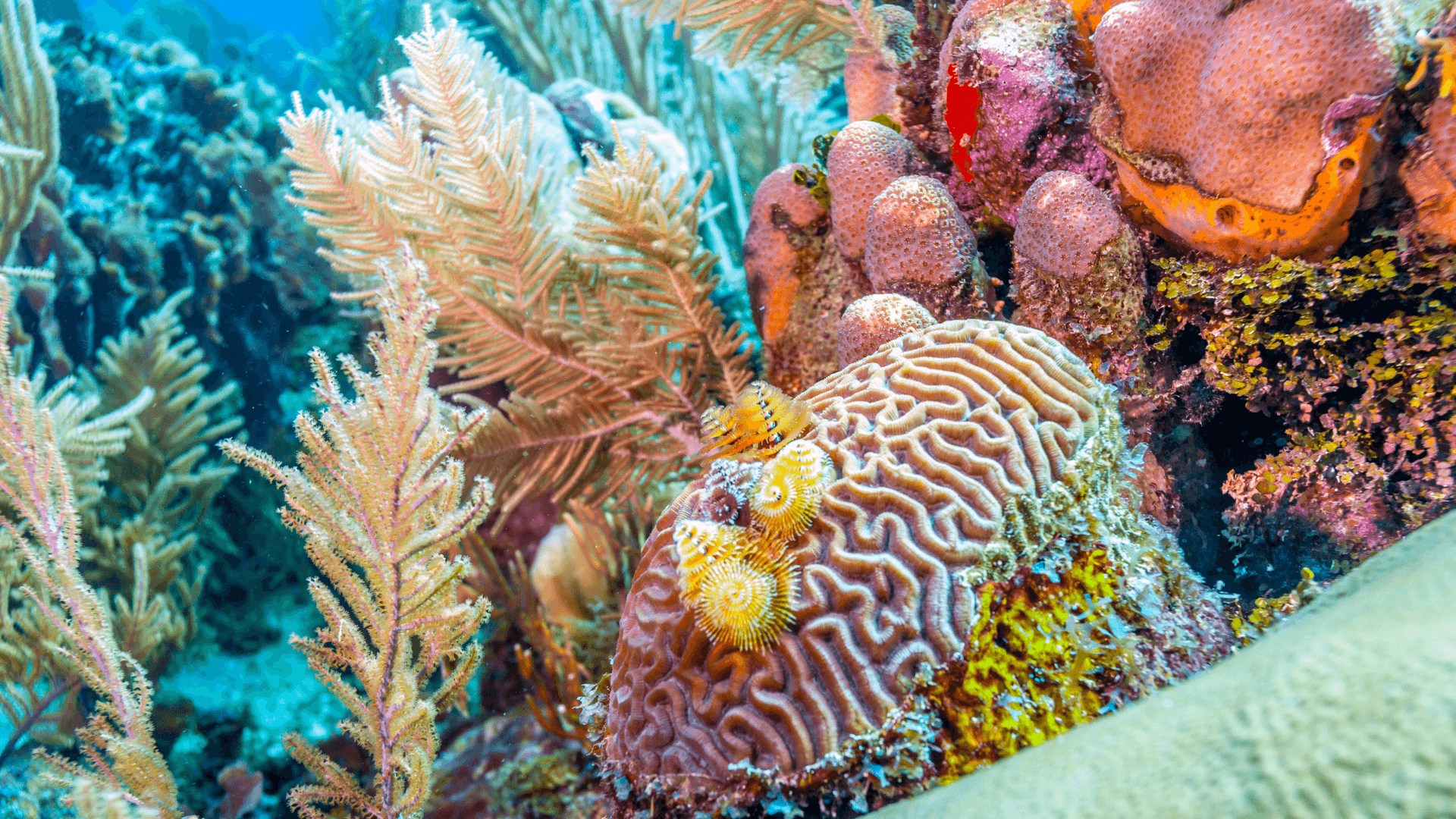Potentially Habitable Environment on Mars Discovered by Perseverance
Potentially Habitable Environment on Mars Discovered by Perseverance
Potentially Habitable Environment on Mars Discovered by Perseverance
Dec 20, 2024
Dec 20, 2024
Dec 20, 2024

Perseverance rover exploring the surface of the Planet Mars. Credit: Alberto Sava via Canva.
Perseverance rover exploring the surface of the Planet Mars. Credit: Alberto Sava via Canva.
Perseverance rover exploring the surface of the Planet Mars. Credit: Alberto Sava via Canva.
NASA's Perseverance rover has discovered ancient rocks and signs of habitable environments on Mars. Read below for more details and the implications of these findings.
NASA's Perseverance rover has discovered ancient rocks and signs of habitable environments on Mars. Read below for more details and the implications of these findings.
NASA's Perseverance rover has discovered ancient rocks and signs of habitable environments on Mars. Read below for more details and the implications of these findings.
Since 2021, NASA's Perseverance rover has been exploring the surface of Mars, providing surprising discoveries about the Red Planet. Recently, the rover in Jezero Crater discovered evidence that could change our understanding of Mars, indicating the presence of a potentially habitable environment billions of years ago. Among the main discoveries are extremely ancient rocks, geological diversity, and indications of water interaction.
Oldest Rocks in the Solar System
One of the most impressive discoveries occurred near the edge of Jezero Crater, where rocks estimated to be over 4 billion years old were analyzed—possibly the oldest ever observed by scientists.
These rocks are older than any formations found on Earth, whose primitive crust was partially destroyed by plate tectonics. By studying them, researchers hope to uncover aspects of the early evolution of rocky planets, a little-known stage in the solar system history.
Furthermore, these unique records reveal how Mars has evolved since its formation and provide clues about the development of conditions favorable to life on Earth-like planets.
Geological Diversity in Pico Turquino Hills
The hills of Pico Turquino, investigated by Perseverance, stand out as a region of great geological diversity and offer valuable clues about the history of water presence on Mars. The area features igneous formations resulting from volcanic activity and rocks altered by past water interaction.
These formations may be fragments of the planet's primitive crust, providing a rare opportunity to explore Mars' ancient conditions. Signs of water alteration confirm that the area was in contact with liquids, a crucial element for developing habitable environments.
Discovery of a New Habitable Environment
One of the most notable discoveries was the identification of quartz pebbles, a mineral formation unprecedented on Mars. This mineral, typically associated with environments where hot fluids circulate, such as hot springs, was found in the Pico Turquino Hills. On Earth, regions with these characteristics often host microbial life, reinforcing the hypothesis that Mars may have offered habitable conditions previously.
The presence of quartz not only expands the possibilities of where life could have arisen on the Red Planet but also suggests a habitable environment distinct from those previously identified.
Challenges and Next Steps
Despite the promising discoveries, Perseverance faces technical challenges in collecting samples of quartz pebbles, as these materials are loose and not embedded in rocky formations. Therefore, scientists are directing their efforts to locate quartz embedded in solid structures, which can be analyzed more accurately in the future.
The next phase of the mission will involve exploring Witch Hazel Hill, an area with rock layers that may preserve a detailed chronological record of Mars' geological history. Analyzing these layers will allow scientists to reconstruct the events that shaped the planet's surface over billions of years, deepening our understanding of its evolution.
Importance for Mars Exploration
Perseverance's discoveries are fundamental for deepening our understanding of Mars, from its primitive conditions to its potential to sustain life.
Analyzing the planet's geological records allows us to draw parallels with Earth's history, expanding our knowledge about the formation of habitable planets. Future missions, including the planned return of Martian samples to Earth, will be essential for accurately dating these rocks and examining their minerals in detail.
These efforts represent significant advancements in the search for evidence of ancient life on Mars, bringing us closer to answering one of humanity's greatest questions: Are we alone in the universe?
—
Access the original report on Science News to understand everything about the evidence of habitable environments on Mars.
Since 2021, NASA's Perseverance rover has been exploring the surface of Mars, providing surprising discoveries about the Red Planet. Recently, the rover in Jezero Crater discovered evidence that could change our understanding of Mars, indicating the presence of a potentially habitable environment billions of years ago. Among the main discoveries are extremely ancient rocks, geological diversity, and indications of water interaction.
Oldest Rocks in the Solar System
One of the most impressive discoveries occurred near the edge of Jezero Crater, where rocks estimated to be over 4 billion years old were analyzed—possibly the oldest ever observed by scientists.
These rocks are older than any formations found on Earth, whose primitive crust was partially destroyed by plate tectonics. By studying them, researchers hope to uncover aspects of the early evolution of rocky planets, a little-known stage in the solar system history.
Furthermore, these unique records reveal how Mars has evolved since its formation and provide clues about the development of conditions favorable to life on Earth-like planets.
Geological Diversity in Pico Turquino Hills
The hills of Pico Turquino, investigated by Perseverance, stand out as a region of great geological diversity and offer valuable clues about the history of water presence on Mars. The area features igneous formations resulting from volcanic activity and rocks altered by past water interaction.
These formations may be fragments of the planet's primitive crust, providing a rare opportunity to explore Mars' ancient conditions. Signs of water alteration confirm that the area was in contact with liquids, a crucial element for developing habitable environments.
Discovery of a New Habitable Environment
One of the most notable discoveries was the identification of quartz pebbles, a mineral formation unprecedented on Mars. This mineral, typically associated with environments where hot fluids circulate, such as hot springs, was found in the Pico Turquino Hills. On Earth, regions with these characteristics often host microbial life, reinforcing the hypothesis that Mars may have offered habitable conditions previously.
The presence of quartz not only expands the possibilities of where life could have arisen on the Red Planet but also suggests a habitable environment distinct from those previously identified.
Challenges and Next Steps
Despite the promising discoveries, Perseverance faces technical challenges in collecting samples of quartz pebbles, as these materials are loose and not embedded in rocky formations. Therefore, scientists are directing their efforts to locate quartz embedded in solid structures, which can be analyzed more accurately in the future.
The next phase of the mission will involve exploring Witch Hazel Hill, an area with rock layers that may preserve a detailed chronological record of Mars' geological history. Analyzing these layers will allow scientists to reconstruct the events that shaped the planet's surface over billions of years, deepening our understanding of its evolution.
Importance for Mars Exploration
Perseverance's discoveries are fundamental for deepening our understanding of Mars, from its primitive conditions to its potential to sustain life.
Analyzing the planet's geological records allows us to draw parallels with Earth's history, expanding our knowledge about the formation of habitable planets. Future missions, including the planned return of Martian samples to Earth, will be essential for accurately dating these rocks and examining their minerals in detail.
These efforts represent significant advancements in the search for evidence of ancient life on Mars, bringing us closer to answering one of humanity's greatest questions: Are we alone in the universe?
—
Access the original report on Science News to understand everything about the evidence of habitable environments on Mars.
Since 2021, NASA's Perseverance rover has been exploring the surface of Mars, providing surprising discoveries about the Red Planet. Recently, the rover in Jezero Crater discovered evidence that could change our understanding of Mars, indicating the presence of a potentially habitable environment billions of years ago. Among the main discoveries are extremely ancient rocks, geological diversity, and indications of water interaction.
Oldest Rocks in the Solar System
One of the most impressive discoveries occurred near the edge of Jezero Crater, where rocks estimated to be over 4 billion years old were analyzed—possibly the oldest ever observed by scientists.
These rocks are older than any formations found on Earth, whose primitive crust was partially destroyed by plate tectonics. By studying them, researchers hope to uncover aspects of the early evolution of rocky planets, a little-known stage in the solar system history.
Furthermore, these unique records reveal how Mars has evolved since its formation and provide clues about the development of conditions favorable to life on Earth-like planets.
Geological Diversity in Pico Turquino Hills
The hills of Pico Turquino, investigated by Perseverance, stand out as a region of great geological diversity and offer valuable clues about the history of water presence on Mars. The area features igneous formations resulting from volcanic activity and rocks altered by past water interaction.
These formations may be fragments of the planet's primitive crust, providing a rare opportunity to explore Mars' ancient conditions. Signs of water alteration confirm that the area was in contact with liquids, a crucial element for developing habitable environments.
Discovery of a New Habitable Environment
One of the most notable discoveries was the identification of quartz pebbles, a mineral formation unprecedented on Mars. This mineral, typically associated with environments where hot fluids circulate, such as hot springs, was found in the Pico Turquino Hills. On Earth, regions with these characteristics often host microbial life, reinforcing the hypothesis that Mars may have offered habitable conditions previously.
The presence of quartz not only expands the possibilities of where life could have arisen on the Red Planet but also suggests a habitable environment distinct from those previously identified.
Challenges and Next Steps
Despite the promising discoveries, Perseverance faces technical challenges in collecting samples of quartz pebbles, as these materials are loose and not embedded in rocky formations. Therefore, scientists are directing their efforts to locate quartz embedded in solid structures, which can be analyzed more accurately in the future.
The next phase of the mission will involve exploring Witch Hazel Hill, an area with rock layers that may preserve a detailed chronological record of Mars' geological history. Analyzing these layers will allow scientists to reconstruct the events that shaped the planet's surface over billions of years, deepening our understanding of its evolution.
Importance for Mars Exploration
Perseverance's discoveries are fundamental for deepening our understanding of Mars, from its primitive conditions to its potential to sustain life.
Analyzing the planet's geological records allows us to draw parallels with Earth's history, expanding our knowledge about the formation of habitable planets. Future missions, including the planned return of Martian samples to Earth, will be essential for accurately dating these rocks and examining their minerals in detail.
These efforts represent significant advancements in the search for evidence of ancient life on Mars, bringing us closer to answering one of humanity's greatest questions: Are we alone in the universe?
—
Access the original report on Science News to understand everything about the evidence of habitable environments on Mars.
Compartir en:
Compartir en:
Ver También
Ver También

DeepSeek AI: el chatbot chino que está sacudiendo el mercado global
Feb 7, 2025

Estudio revela que la vida social activa puede reducir el riesgo de demencia
Feb 4, 2025

Año nuevo lunar 2025: la llegada del año de la serpiente
Jan 30, 2025

Nueva hipótesis sobre el origen de los dinosaurios desafía conceptos tradicionales
Jan 27, 2025

Colapso de la plataforma de hielo Conger: alerta para la Antártida Oriental
Dec 20, 2024

Emociones y el cuerpo humano: conexiones milenarias en textos neoasirios
Dec 20, 2024

Un estudio relaciona la contaminación atmosférica con el riesgo de tromboembolia venosa
Dec 20, 2024

Ambiente potencialmente habitable en Marte descubierto por Perseverance
Dec 20, 2024

Revolución XRISM: Nuevos descubrimientos sobre agujeros negros supermasivos
Oct 15, 2024

Estudio aponta que la duplicación del gen AMY1, relacionado con la digestión del almidón, precede a la agricultura
Oct 14, 2024

Nacimientos en la UE caen por debajo de los 4 millones por primera vez desde 1960
Oct 11, 2024

Excavación en Dinamarca revela 50 esqueletos Viking increíblemente preservados
Oct 10, 2024

Estudio detecta mayor incidencia de asma y rinitis alérgica en personas nacidas en otoño e invierno en Finlandia
Oct 9, 2024

Estudio señala similitudes entre la pubertad de adolescentes de la Edad de Hielo y jóvenes modernos
Oct 8, 2024

Análisis de ADN en momias chinas de 3.600 años revela el queso más antiguo del mundo
Oct 7, 2024

Estudio revela estabilidad genética de poblaciones del África Austral durante 10 milenios
Oct 4, 2024

Nueve lugares míticos que podrían haber existido, según descubrimientos arqueológicos
Oct 3, 2024

Cómo los derechos humanos pueden salvar los arrecifes de coral y responsabilizar a los gobiernos
Oct 2, 2024

Informe de Carbon Brief señala que 2024 podría ser el año más cálido de la historia
Sep 4, 2024

El clima determina la distribución de mamíferos, revela estudio de la Universidad Estatal de Carolina del Norte
Sep 4, 2024

DeepSeek AI: el chatbot chino que está sacudiendo el mercado global
Feb 7, 2025

Estudio revela que la vida social activa puede reducir el riesgo de demencia
Feb 4, 2025

Año nuevo lunar 2025: la llegada del año de la serpiente
Jan 30, 2025

Nueva hipótesis sobre el origen de los dinosaurios desafía conceptos tradicionales
Jan 27, 2025

Colapso de la plataforma de hielo Conger: alerta para la Antártida Oriental
Dec 20, 2024

Emociones y el cuerpo humano: conexiones milenarias en textos neoasirios
Dec 20, 2024

Un estudio relaciona la contaminación atmosférica con el riesgo de tromboembolia venosa
Dec 20, 2024

Ambiente potencialmente habitable en Marte descubierto por Perseverance
Dec 20, 2024

Revolución XRISM: Nuevos descubrimientos sobre agujeros negros supermasivos
Oct 15, 2024

Estudio aponta que la duplicación del gen AMY1, relacionado con la digestión del almidón, precede a la agricultura
Oct 14, 2024

Nacimientos en la UE caen por debajo de los 4 millones por primera vez desde 1960
Oct 11, 2024

Excavación en Dinamarca revela 50 esqueletos Viking increíblemente preservados
Oct 10, 2024

Estudio detecta mayor incidencia de asma y rinitis alérgica en personas nacidas en otoño e invierno en Finlandia
Oct 9, 2024

Estudio señala similitudes entre la pubertad de adolescentes de la Edad de Hielo y jóvenes modernos
Oct 8, 2024

Análisis de ADN en momias chinas de 3.600 años revela el queso más antiguo del mundo
Oct 7, 2024

Estudio revela estabilidad genética de poblaciones del África Austral durante 10 milenios
Oct 4, 2024

Nueve lugares míticos que podrían haber existido, según descubrimientos arqueológicos
Oct 3, 2024

Cómo los derechos humanos pueden salvar los arrecifes de coral y responsabilizar a los gobiernos
Oct 2, 2024

Informe de Carbon Brief señala que 2024 podría ser el año más cálido de la historia
Sep 4, 2024

El clima determina la distribución de mamíferos, revela estudio de la Universidad Estatal de Carolina del Norte
Sep 4, 2024